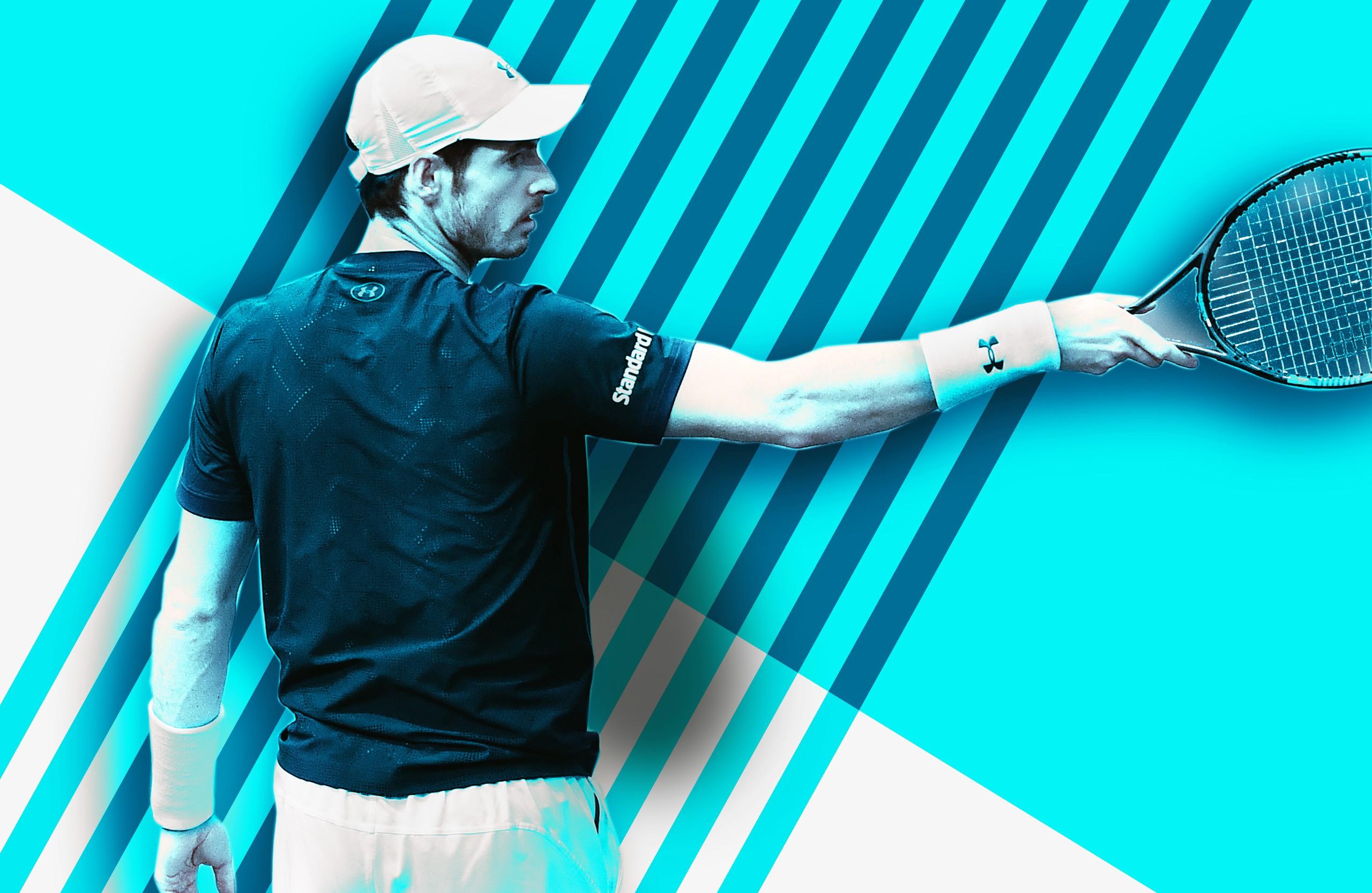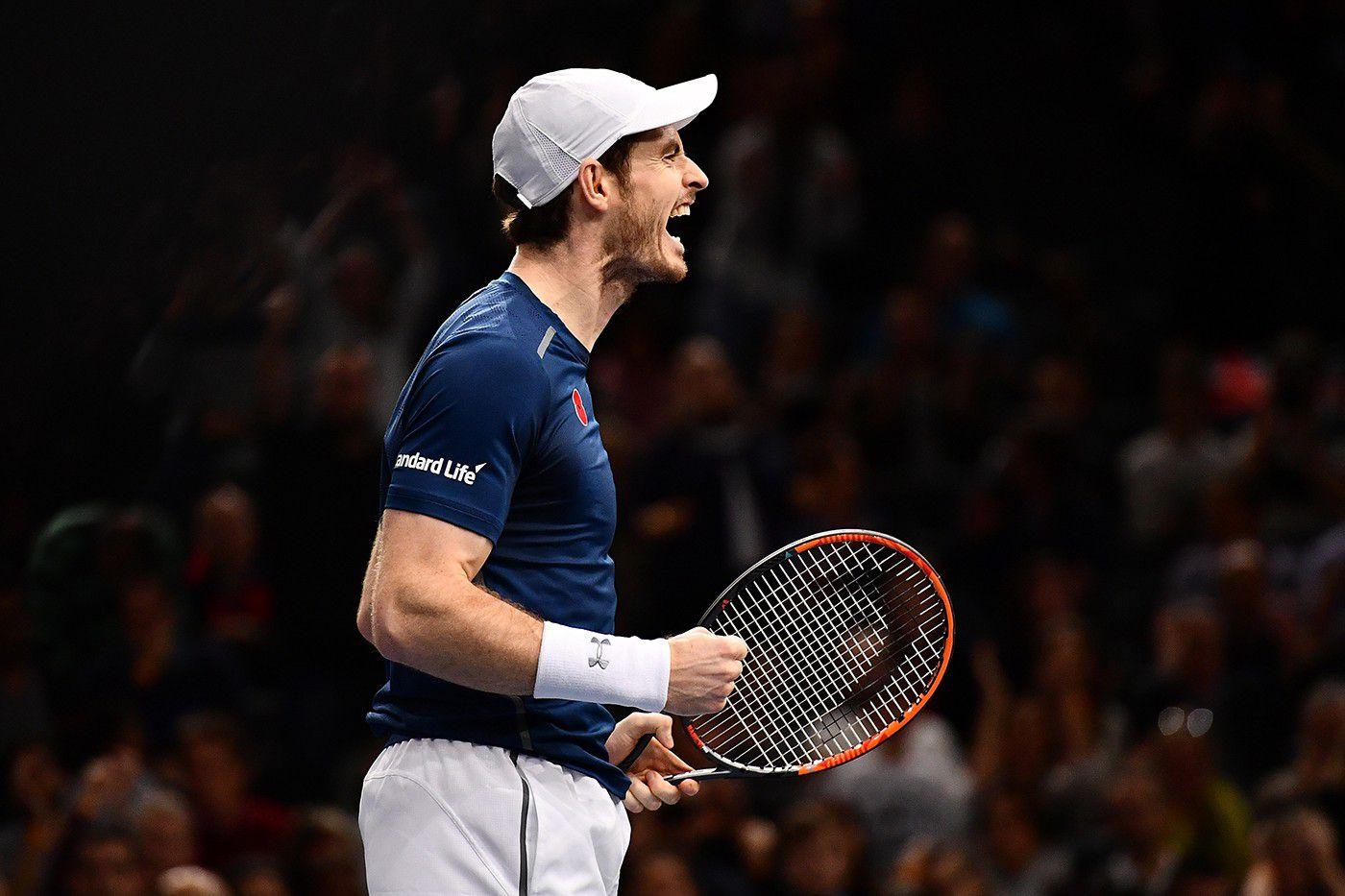
When Andy Murray plays tennis, he usually yells. He yells at himself or at the friends and family in his box. He yells at his racket, at the ball, or sometimes, seemingly at nothing and nobody at all. Of the players who have dominated the discussions surrounding men’s tennis over the past 12 years, Murray has been the most animated, seemingly the most frustrated by the chore of competing and existing on a tennis court. Murray is not the only athlete with a relationship to pressure and expectation. Most famous people carry extra stress along with their increased visibility. But the weight on Murray’s shoulders comes from years spent in a sort of inescapable tennis purgatory. For much of his career, the fans and the media have questioned whether Murray is a disappointment.
After reaching the final of the Paris Masters last week, which he won, Murray took the top spot in the ATP’s rankings for the first time in his career. The title of world no. 1 has been rare air in the modern game: Since Roger Federer first took it in February 2004, only Rafael Nadal and Novak Djokovic, who have 135 titles between them, have been ranked first. Andy Roddick, the last player outside of this group to be the game’s top-ranked player, won 32 titles over the course of his entire 13-year career.
Over the past dozen years, the very top of the men’s tour has been as impenetrable as it’s ever been. The dominance of the Big Three has made all other players — great, good, or mediocre — into a sideshow. Murray has never been either irrelevant or merely “good,” but for much of his career, he’s been a foil, a punching bag, a plateholder. His game was not built for highlight reels; he’s a defender, a counterpuncher with a bulletproof backhand. He will never get the benefit of the doubt enjoyed by players with flashier games, but he’s managed to win nonetheless. Though, despite all of the winning he has enjoyed, it’s been difficult to think of Murray as anything but the tour’s most famous subplot.
But now, more than seven years after he first became the world no. 2 in August 2009, the 29-year-old has become the headliner. He’s the oldest player to reach no. 1 since 1974. By their 30s, most players have established their identities; they’ve accomplished the majority of the feats for which they will be remembered. Months away from his fourth decade, Murray seems uninterested in crystallizing alongside the other footnotes in tennis history.

At Wimbledon in 2005, Murray was 18 and already an object of British obsession. A homegrown player hadn’t won the men’s singles title at Wimbledon since Fred Perry in 1936, and Tim Henman, long expected to be the curse breaker, was 30 years old and had just lost in the tournament’s second round.
Murray was the world’s 312th-ranked player, and had earned a berth in the tournament only via wild card. On court, his messy hair was tucked under a hat with Perry’s logo. His face was pockmarked. During Murray’s matches, cameras frequently panned to his box, where his mother, Judy, eagerly watched her child.
The young Scot managed to advance to the tournament’s third round, where he squandered a two-set lead to David Nalbandian. Murray was only 300-some ranking spots away from the ethereal Federer, who would win his third of seven Wimbledon titles that year, but the distance from Murray to the trophy could have stretched across galaxies. Still, the British media gawked over their new savior. The expectations for the kid were clear: Break the drought or be forgotten.

For the next seven years, Murray heard sighs as he fell short of expectations, both at Wimbledon and elsewhere. In each of his first three major finals, he failed to win a single set. His fourth attempt came in 2012 on Wimbledon’s Centre Court against Federer. But this was an older, slower Federer in the midst of his own major drought. The then-30-year-old hadn’t won a major in over two years. Murray, brimming with energy, won the opening set. He pumped his fist, and this time, it was the crowd that yelled. Earlier in 2012, Bradley Wiggins had become the first Brit to win the Tour de France. But that would be the only sporting drought ended by the British that year; Murray quietly lost the next three sets, and Federer lifted his seventh Wimbledon trophy.
A month later Murray’s fortunes began to change. He beat Federer in a Centre Court rematch in the finals of the London Olympics. That September, he topped Djokovic in five sets in the U.S. Open final to win his first major. The next year, he reached the Wimbledon final again, and there would be no letdown. He beat Djokovic in three decisive sets and ended Britain’s 77-year cold streak. At home, Murray was now untouchable. His win immediately spawned documentaries and strawberry-and-cream-fueled celebrations. But in tennis’s grand scheme, Murray’s fame was still only a novelty. He still hadn’t won three, or even two, majors in a year like his contemporaries had. It seemed inevitable that a “but,” would be somewhere in any discussion of Murray’s career. He merited a place in conversations about Federer, Nadal, and Djokovic not because he was their equal, but because he was the lone resident of the enormous gulf between the Big Three and the rest of the tour.

This year at Wimbledon, Murray reached his 11th major final. He’d lost to Djokovic in both Melbourne and Paris earlier in the season. But when he walked onto Centre Court on this particular final Sunday, for the first time Murray’s last hurdle at a major wasn’t Djokovic or Federer. This time his opponent was Milos Raonic, the stretched-out Canadian known for getting easy points on his serve. Nowadays, when there are big upsets, they often come from big servers who are hitting their spots. But Murray was steady, and he dispatched Raonic in three sets.
In the months since, Federer, Nadal, and Djokovic have all struggled with injuries of varying severity. Murray didn’t win the U.S. Open — instead, Stan Wawrinka took the season’s last major — but Murray has shown that he’s no longer stranded in the gap between Djokovic and the field. At the Olympics in Rio, he became the only person, male or female, to win two gold medals in singles. Titles at events in Beijing, Shanghai, and Vienna followed.
In the quarterfinals of last week’s tournament in Paris, Murray reached a first-set tiebreak against Tomas Berdych, a lanky tour mainstay. Earlier in the day, Djokovic had lost his quarterfinal to Marin Cilic, so Murray knew that if he could win his next two matches, he would take over the top ranking. But the weight of expectations again looked to be getting to the Scot. As his groundstrokes erred wide and long, Murray, of course, yelled. The Czech earned five set points at 6–1.
What happened next is what happens only with players who have built a reputation for being unbeatable. When opponents realize that they’re about to steal a set or a win from a great player, they choke. Routine volleys find their way into the net; strokes that would have tucked themselves inside the baseline spray two or three feet long. Perhaps there is no better sign that you’ve made it in an individual sport than when opponents can’t bring themselves to take a match that should be theirs. Berdych threw his lead away: Murray saved all five set points, and another a few minutes later after gifting Berdych a careless double fault. He won the tiebreak 11–9 and, after a 7–5 second set, the match.
Murray wouldn’t even need to step on court to pass Djokovic. Raonic, his opponent in the next round, pulled out of the tournament with a leg injury.
Today, Murray no longer plays for history, or at least history as we currently think of it. In a sport where players are largely defined by a number of titles that can increase by no more than four each year, Murray lags impossibly far behind the others who have recently been ranked as the world’s best. Earlier this year, The New Yorker’s Louisa Thomas called him a “walking existential crisis,” because we cannot understand the goals to which he aspires. But maybe it’s not so complicated. Maybe Murray understands better than we do that a career can be much more than a numeral in the “majors won” column.
In the finals in Paris, Murray faced the American John Isner, who stands 6-foot-10 and is the player on tour most likely to cause death by aces. This time, the match didn’t come as a gift. Isner is not particularly consistent or mobile, but breaking his enormous serve is nearly impossible. In the second set of their match, Isner lost only five service points. But Murray, again, was steady. He broke Isner in the first set, and again in the third to win the match. When the tournament was over, Murray didn’t yell. Neither did the crowd. This time, the noise was just applause.